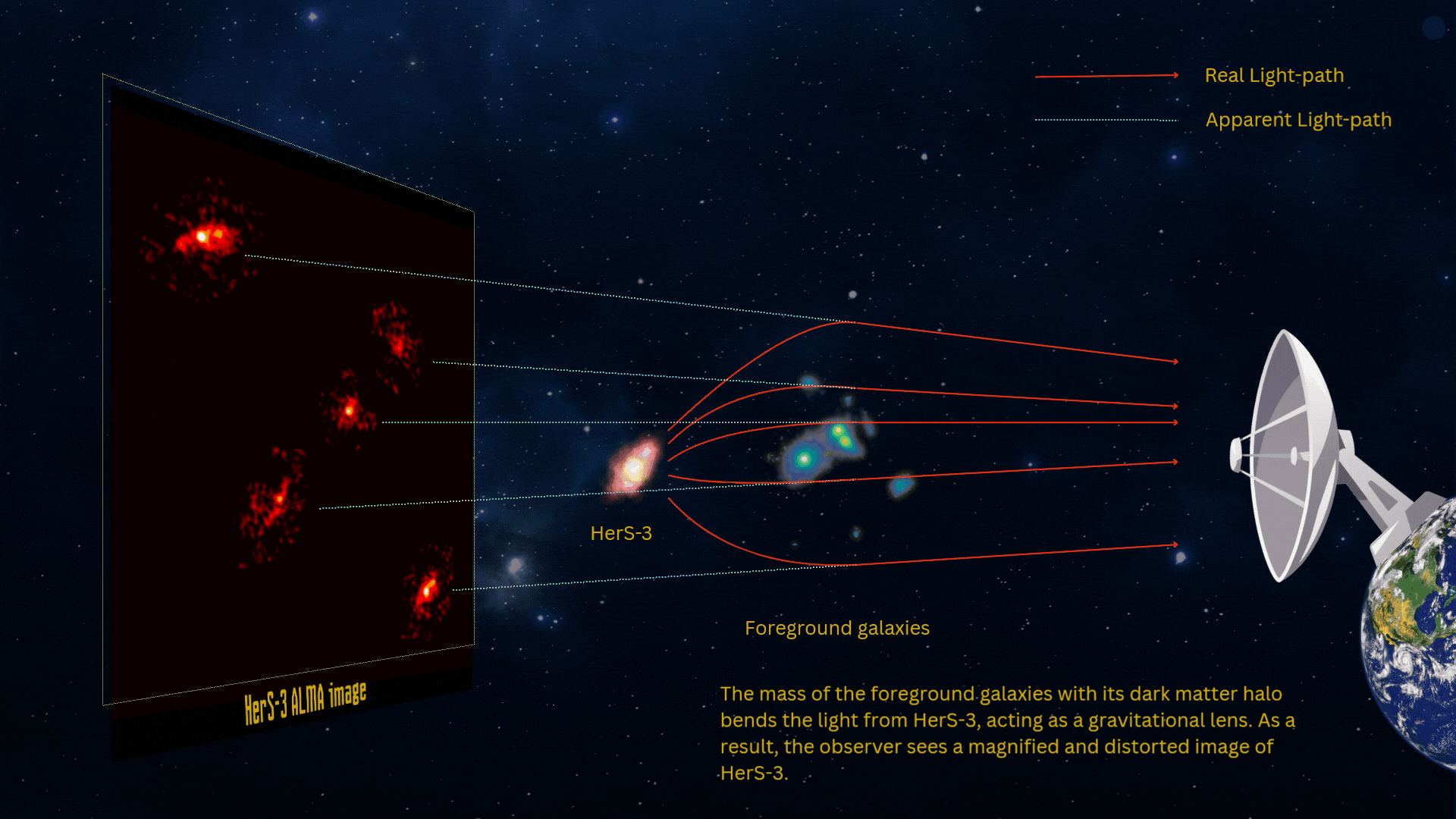Astronomers have seen something they did not expect: an Einstein Cross with not just the standard four images, there was an extra one. This unprecedented present might allow astronomers to better understand dark matter, the hypothetical substance believed to permeate the cosmos, outweighing the regular matter that makes us by a factor of five.
What is an Einstein Cross?
An Einstein Cross is a peculiar gravitational lensing effect. In our line of sight, there is a foreground massive object (galaxy or galaxy cluster), and behind it, maybe billions of years away, there is another galaxy or quasar. The gravity of the foreground body warps space-time in such a way that it acts like a lens. It magnifies and warps the light of the distant galaxy. It also multiplies the images. An Einstein Cross has five images, but with a caveat.
The geometrical arrangement creates four images that are roughly in the shape of a cross, 90 degrees from each other, and the fifth image appears very close to the central lensing object, which makes it pretty much invisible to us, until this new discovery.
While many gravitationally lensed objects are known, the number of Einstein Crosses is in the several dozens, from the original namesake (QSO 2237+0305) to many others. A relatively recent one is the stunning Carousel Lens described to IFLScience by its discoverer, Dr David Schlegel, as “a one-in-a-billion object in the sky.”
The elusive fifth image
Now, there is another, currently unique object: HerS-3. Unique because for the first time, researchers could see the fifth image in the middle of the cross.
“Have you ever seen an Einstein Cross with an image in the middle?” Andrew Baker asked his colleague Charles Keeton, both at Rutgers University-New Brunswick, as reported in a press statement.
“I said, well, that’s not supposed to happen,” Keeton replied. “You can’t get a fifth image in the center unless something unusual is going on with the mass that’s bending the light.”

This gif shows how the five images of this Einstein Cross are produced.
Image Credit: N. Lira, Cox et al. – ALMA (ESO/NAOJ/NRAO) / NOEMA
“We were like, ‘What the heck?’,” added lead author Pierre Cox, Research Director at the French National Centre for Scientific Research. “It looked like a cross, and there was this image in the center. I knew I had never seen that before.”
A dark matter halo bigger than the Milky Way
The distribution of the images in an Einstein cross depends on how matter is distributed in the foreground lens. Galaxies are surrounded by a dark matter halo, extending further out than the stars we can see. In galaxy clusters, the halos can overlap, creating a vast dark matter bubble. For HerS-3, there are four massive visible galaxies that shape the lensed image. Those alone, though, cannot explain what we see; the models suggest the presence of a massive dark matter halo in the middle.
“The only way to reproduce the remarkable configuration we observed was to add an invisible, massive component: a dark matter halo at the center of the galaxy group,” Cox said in a different statement. “This halo weighs several trillion times the mass of our Sun.”
The total mass of our galaxy, the Milky Way, is less than 2 trillion Suns; 80 percent of that is dark matter. This peculiar space object can allow astronomers to put more constraints on dark matter, which, despite its predictive power, remains hypothetical. We have yet to determine what it is.
A paper describing HerS-3 is published in The Astrophysical Journal.
Source Link: What Is An Einstein Cross – And Why Is The Latest One Such A Unique Find?